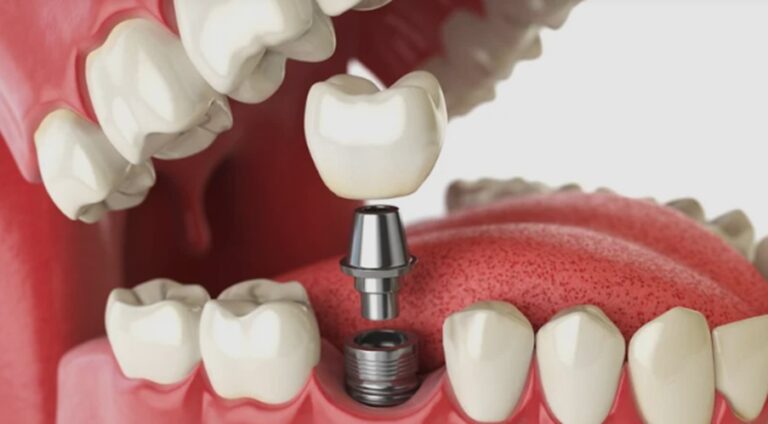
The construction industry has a long history of asbestos use, making it a high-risk sector for asbestos exposure. Workers involved in various construction activities face potential health hazards due to the disturbance of asbestos-containing materials. It’s a serious issue, and understanding the risks is the first step in preventing harm.
Asbestos Use in Building Materials
Asbestos was commonly used in a wide range of building materials, including insulation, roofing shingles, floor tiles, and cement pipes. Its heat resistance and durability made it a popular choice for many years. The problem is, these materials are still present in older buildings. When these buildings are renovated or demolished, asbestos fibers can become airborne, posing a significant risk to workers. It’s not just old buildings either; some newer materials may still contain asbestos, though regulations are stricter now.
Renovation and Demolition Hazards
Renovation and demolition work are particularly hazardous because they involve disturbing asbestos-containing materials. Workers who drill, cut, or remove these materials can release asbestos fibers into the air. These fibers, when inhaled, can lead to serious health problems like mesothelioma, lung cancer, and asbestosis. It’s not just the workers directly involved either; anyone in the vicinity can be exposed. Proper training and safety measures are essential to minimize these risks. If you’re a construction worker, you should know about asbestos trust funds that can help if you’ve been exposed.
Worker Safety Regulations
To protect construction workers, various regulations and guidelines have been put in place. These regulations typically include requirements for:
- Asbestos awareness training
- Proper handling and disposal procedures
- The use of personal protective equipment (PPE), such as respirators and protective clothing
- Air monitoring to ensure fiber levels are within safe limits
Compliance with these regulations is crucial for minimizing the risk of asbestos exposure. Regular inspections and enforcement are also necessary to ensure that employers are following the rules. It’s a complex issue, but the goal is simple: to keep workers safe.
Shipbuilding and Ship Repair
Historical Use of Asbestos in Ships
Asbestos was, like, everywhere in ships built before the 1980s. Seriously, it was used for insulation, fireproofing, and even in the gaskets and packing. Think about it: ships need to withstand extreme temperatures and conditions, so asbestos seemed like the perfect solution back then. Little did they know about the long-term health consequences. It’s kind of crazy to think about how widespread its use was, especially considering what we know now about asbestos-related diseases.
Health Risks for Shipyard Workers
Shipyard workers face a higher risk of developing mesothelioma and other asbestos-related diseases. This is because they were constantly exposed to asbestos dust when cutting, fitting, or removing asbestos-containing materials. It wasn’t just the people building the ships, either. Those involved in repair and demolition were also at risk. It’s a pretty grim picture when you consider the number of people affected over the years. The latency period for these diseases can be decades, so many workers are only now experiencing the consequences of their past exposure.
Preventive Measures in Shipbuilding
Okay, so things are way different now. There are regulations and protocols in place to protect workers from asbestos exposure. Here are some of the things that are done:
- Asbestos abatement procedures are strictly followed during ship repair and demolition.
- Workers are required to wear protective gear, including respirators and suits.
- Regular air monitoring is conducted to ensure asbestos levels are within safe limits.
It’s a big improvement, but there’s still a need for vigilance and ongoing training to make sure everyone stays safe. Plus, there’s the legacy of past exposure to deal with, which is a whole other challenge.
Manufacturing Sector Vulnerabilities
The manufacturing sector presents unique challenges regarding asbestos exposure. It’s not always obvious, but many older manufacturing facilities used asbestos-containing materials extensively. This creates potential risks for workers even today.
Asbestos in Insulation Products
Asbestos was a popular choice for insulation due to its heat-resistant properties. Boilers, pipes, and various industrial equipment were often insulated with asbestos-containing materials. Over time, this insulation can degrade, releasing asbestos fibers into the air. Workers involved in maintenance or repair of this equipment face a higher risk of exposure. It’s important to remember that even seemingly minor disturbances can release these dangerous fibers. Proper handling and disposal are essential to prevent health problems. Here are some common insulation products that contained asbestos:
- Pipe insulation
- Boiler insulation
- Spray-on insulation
Exposure in Textile Manufacturing
Asbestos found its way into textile manufacturing, particularly in the production of heat-resistant fabrics and materials. Workers involved in the processing of these textiles could inhale asbestos fibers. While its use has declined, historical exposure remains a concern. The long latency period of mesothelioma means that past exposures can still lead to disease decades later. It’s a sobering thought, but awareness is the first step in prevention. asbestos exposure is a serious concern.
Protective Equipment and Protocols
To mitigate the risks, manufacturing facilities must implement strict safety protocols. This includes providing workers with appropriate protective equipment, such as respirators and protective clothing. Regular air monitoring is also crucial to ensure that asbestos fiber levels remain within safe limits. Furthermore, comprehensive training programs are needed to educate workers about the hazards of asbestos and the proper procedures for handling asbestos-containing materials. Here are some key elements of a robust safety program:
- Regular air monitoring
- Use of respirators
- Proper disposal procedures
Automotive Industry Concerns
The automotive industry presents specific concerns regarding asbestos exposure, particularly for mechanics and technicians who work with older vehicles. Asbestos was commonly used in various automotive components due to its heat resistance and durability. Let’s take a look.
Asbestos in Brake Linings
Asbestos was a primary component in brake linings and pads for many years. Its heat-resistant properties made it ideal for withstanding the high temperatures generated during braking. When brakes are serviced, the friction material wears down, releasing asbestos fibers into the air. Mechanics performing brake work on older vehicles are at significant risk of inhaling these fibers. It’s a real problem, especially when you consider how many older cars are still on the road. I remember my dad working on his old car, and the dust was everywhere. Now I know what he was dealing with.
Risks for Mechanics and Technicians
Mechanics and technicians face the greatest risk of asbestos exposure in the automotive industry. The routine tasks of replacing brake pads, clutches, and other asbestos-containing parts can release harmful fibers. The risk is compounded by poor ventilation in many auto repair shops and a lack of awareness or adherence to safety protocols. The long latency period of mesothelioma means that many mechanics who were exposed decades ago are only now developing symptoms. It’s a scary thought. Here’s a few things to keep in mind:
- Consistent exposure increases the risk.
- Lack of protective gear exacerbates the problem.
- Older shops may have higher concentrations of asbestos dust.
Regulatory Changes and Compliance
Regulations regarding asbestos use in automotive components have changed significantly over the years. Many countries have banned or severely restricted the use of asbestos in new vehicles. However, the legacy of asbestos use remains a concern, as older vehicles still require maintenance and repair. Compliance with safety regulations, such as using proper ventilation and wearing respirators, is crucial for protecting workers. It’s important to stay informed about the latest regulations and best practices. For example, understanding the risks of mesothelioma development is key to prevention.
Mining and Natural Resource Extraction
Asbestos Mining Practices
Asbestos mining, historically, was a pretty big deal. Asbestos litigation was common. The process involved extracting the mineral from the earth, which, as you can imagine, kicked up a ton of dust. This dust, loaded with asbestos fibers, was the main problem. Miners were constantly exposed, and back in the day, safety measures weren’t exactly top-notch. It was pretty much a free-for-all, with little regard for the long-term health consequences. The methods used to get the asbestos out of the ground were often crude, leading to even more fiber release. It’s a stark reminder of how industrial practices used to prioritize profit over people.
Health Impacts on Miners
The health impacts on miners were devastating. The constant exposure to asbestos fibers led to a range of respiratory illnesses. Mesothelioma, a rare and aggressive cancer, was a common outcome. Asbestosis, a chronic lung disease, was another frequent diagnosis. Lung cancer rates were also significantly higher among these workers. The latency period for these diseases is long, meaning symptoms often didn’t appear until decades after the initial exposure. This made it difficult to connect the illnesses directly to their mining work, at least initially. It’s a tragic legacy of an industry that failed to protect its workers.
Environmental Considerations
Asbestos mining left a real mess behind. The mining sites themselves became environmental hazards. The waste rock, full of asbestos, contaminated the surrounding soil and water sources. This contamination posed risks to both human and animal populations. The dust from these sites could travel long distances, spreading the problem far beyond the immediate area. Reclamation efforts are often difficult and expensive, and in many cases, the damage is irreversible. It’s a reminder that industrial activities can have long-lasting and far-reaching environmental consequences. Consider these points:
- Proper disposal of asbestos waste is crucial.
- Monitoring air and water quality near former mining sites is essential.
- Implementing remediation strategies to contain and remove asbestos contamination is necessary.
Firefighting and Emergency Services
Exposure to Asbestos During Fires
Firefighters often encounter asbestos during structure fires, especially in older buildings where asbestos-containing materials were commonly used. When these materials burn, asbestos fibers can become airborne, posing a significant inhalation risk. The disturbance of asbestos during fires is a major concern. It’s not just the flames; the demolition and cleanup afterward can also release these dangerous fibers. It’s a tough situation because firefighters are already dealing with so many hazards, and this adds another layer of complexity to their work.
Training and Awareness Programs
Effective training is vital for firefighters to recognize and handle asbestos-related risks. Awareness programs should educate them about the types of materials that may contain asbestos, proper protective gear, and decontamination procedures. These programs should cover:
- Identifying potential asbestos-containing materials.
- Using appropriate respiratory protection.
- Following strict decontamination protocols after exposure.
Long-Term Health Monitoring
Given the latency period for mesothelioma and other asbestos-related diseases, long-term health monitoring is essential for firefighters. Regular check-ups and screenings can help detect early signs of illness, improving the chances of successful treatment. This monitoring should include:
- Annual physical examinations.
- Chest X-rays or CT scans.
- Detailed occupational history reviews.
Healthcare and Asbestos Exposure
Risks for Medical Professionals
Healthcare facilities, especially older ones, can pose unexpected risks. Medical professionals might encounter asbestos during building maintenance or renovations. This exposure can occur when asbestos-containing materials are disturbed, releasing fibers into the air. It’s not something you think about every day, but it’s a real concern. For example, nurses working in older hospitals might be exposed during routine tasks if asbestos is present in the building’s structure. It’s important to be aware of the potential dangers and take precautions.
Asbestos in Older Buildings
Many hospitals and clinics built before the 1980s used asbestos in their construction. Insulation, flooring, and ceiling tiles often contained the material. Over time, these materials can deteriorate, releasing asbestos fibers. Identifying and managing asbestos in these buildings is a big job. Here are some things to consider:
- Regular inspections are needed to check for damage.
- Proper removal or encapsulation is essential to prevent exposure.
- Staff training is important to recognize potential hazards.
Patient Care and Safety Protocols
Patient care environments need to be safe for everyone. Asbestos exposure can affect both healthcare workers and patients. Hospitals must have clear safety protocols to minimize risks. These protocols should include:
- Air monitoring to detect asbestos fibers.
- Proper handling of contaminated materials.
- Mesothelioma is a type of cancer caused by asbestos exposure, so it’s important to prevent it.
- Regular health check-ups for staff who may have been exposed.






